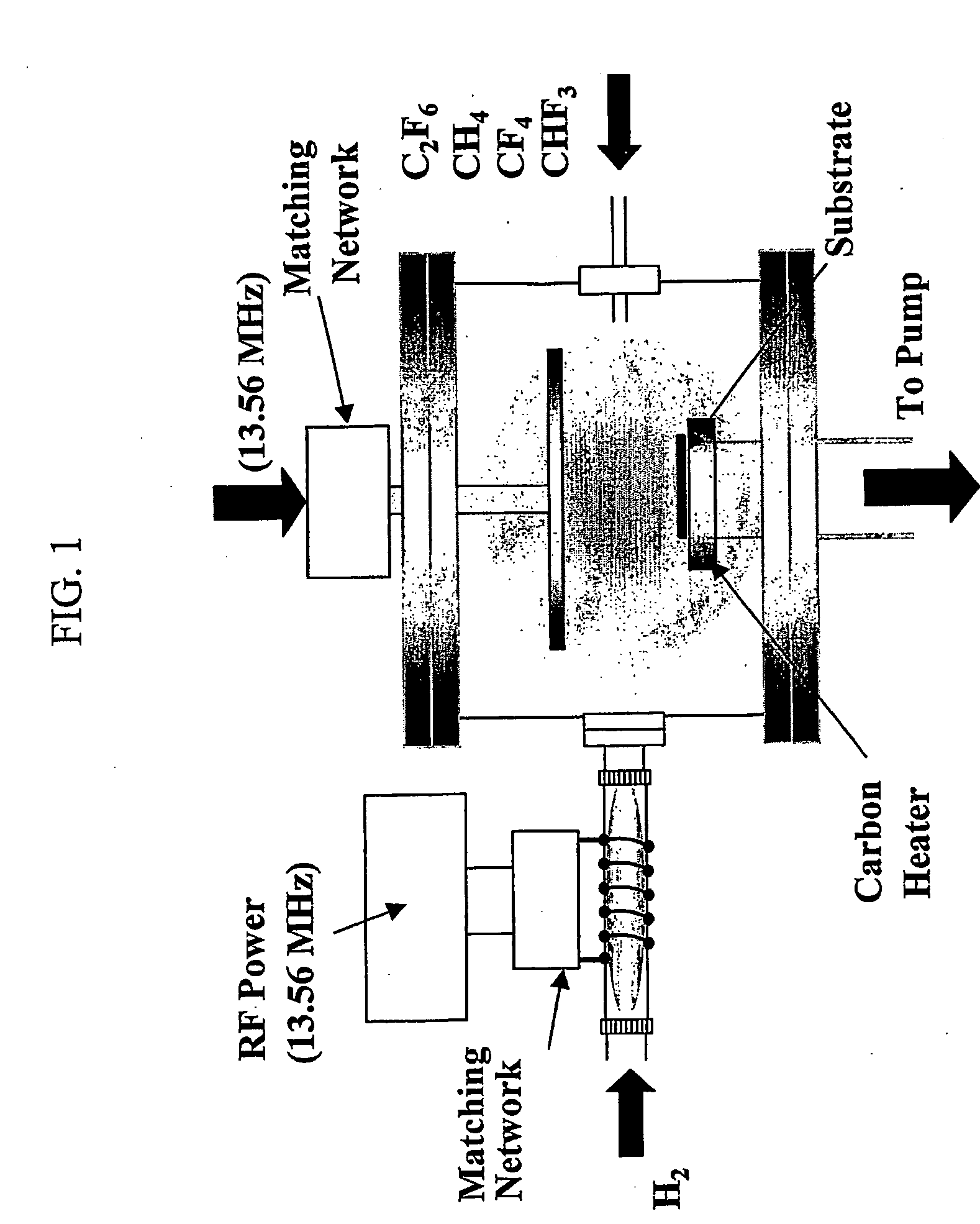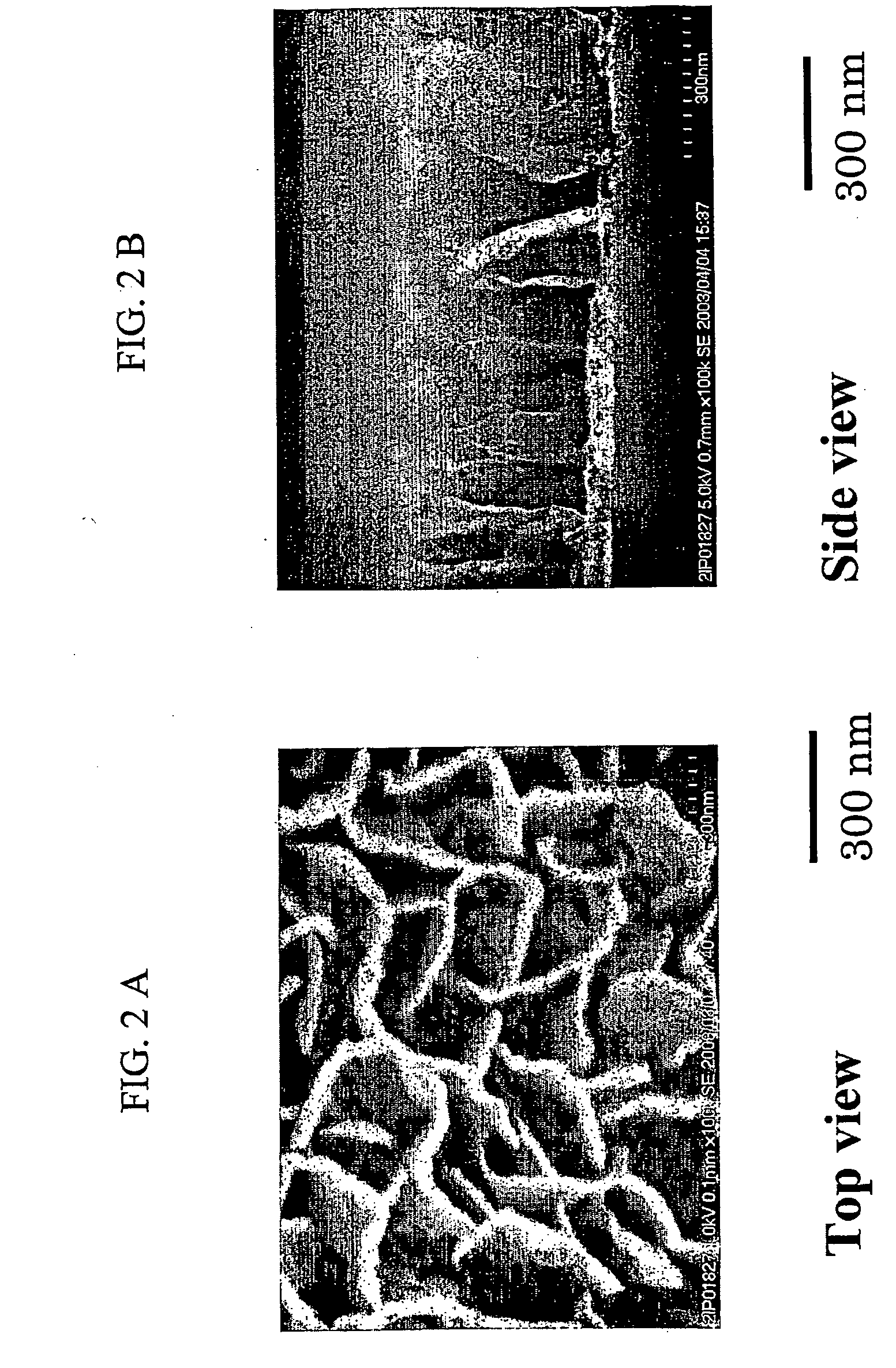Fuel Cell Separator, Electrode Structure for a Fuel Cell, Methods of Manufacturing Both Thereof, and a Polymer Electrolyte Fuel Cell Comprising the Same
a fuel cell and separator technology, applied in the direction of cell components, final product manufacturing, sustainable manufacturing/processing, etc., can solve the problems of inability to ensure the supply of gas below the ribs, small degree of freedom in the shape of the channel, and increase the degree of freedom of design of the gas channel structure, so as to reduce the contact resistance between the separator and the gdl. , the effect of reducing the degree of freedom
- Summary
- Abstract
- Description
- Claims
- Application Information
AI Technical Summary
Benefits of technology
Problems solved by technology
Method used
Image
Examples
example 1
[0049]An example of a method of manufacturing a fuel cell separator with a rib portion formed with CNWs is described below, together with relevant manufacturing conditions. As a current collector plate, a stainless-steel plate measuring 30 mm×30 mm with a thickness of 0.11 mm was used. The stainless-steel plate was disposed in a chamber with a structure based on the above-described method of forming CNWs. C2F6 was then caused to flow into the chamber, and a channel with a desired shape was formed by address control over a period of eight hours. The height of the ribs was 1.4 μm. Using this structure as a separator, an FC small cell with an area of 1 cm2 was prepared, and its cell performance was measured.
example 2
[0050]A current collector structure was prepared in which the CNW of Example 1 was further grown until it was integrated with the diffusion layer. The separator rib in a fuel cell has the role of feeding as much gas as possible to the reaction site and another role of enabling the current-collection to be performed effectively. Meanwhile, the diffusion layer in a fuel cell has the role of applying uniform pressure on the reaction electrodes so as to reduce contact resistance, as well as causing gases to flow below the gas channel ribs.
[0051]However, in the prior art, the diffusion layer and the separator are separate components, resulting in the problem of contact resistance and high cost. Other problems are also expected, such as one in which the behavior of the water produced by the fuel cell reaction at the contact portion becomes irregular.
[0052]To overcome these problems, CNWs were grown on a flat electrode plate (which may be either carbon or metal) until it was integrated wit...
example 3
[0056]The CNW patterns obtained in Examples 1 and 2 were subjected to hydrophilic / hydrophobic treatment so as to obtain a structure with an improved drainage property. The fuel cell separator ribs have the two roles, one to feed as much gas as possible to the reaction site, and the other to enable the current collection to be performed effectively. The diffusion layer in a fuel cell, on the other hand, has the role of causing gas to flow below the gas channel ribs, and another role of applying uniform pressure to the reaction electrodes so as to reduce contact resistance. The separator ribs and the diffusion layer are both typically provided with a water repellent treatment on the surface thereof so that the produced water can be drained effectively.
[0057]However, in the current state of the art, water-repellent treatment cannot be performed at appropriate portions of the diffusion layer and the separator. As a result, sufficient drainage property cannot be obtained.
[0058]Thus, the ...
PUM
 Login to View More
Login to View More Abstract
Description
Claims
Application Information
 Login to View More
Login to View More - R&D
- Intellectual Property
- Life Sciences
- Materials
- Tech Scout
- Unparalleled Data Quality
- Higher Quality Content
- 60% Fewer Hallucinations
Browse by: Latest US Patents, China's latest patents, Technical Efficacy Thesaurus, Application Domain, Technology Topic, Popular Technical Reports.
© 2025 PatSnap. All rights reserved.Legal|Privacy policy|Modern Slavery Act Transparency Statement|Sitemap|About US| Contact US: help@patsnap.com



